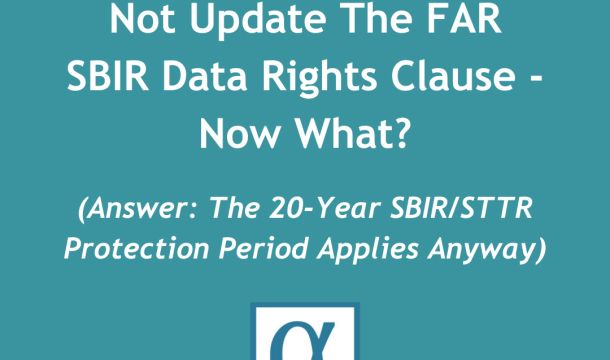The GovCon Bulletin™
Service Contract Employee Nondisplacement Rule Makes A Comeback
November 24, 2021
FAR Rule Update: Rule Revising Commercial Item Definitions Becomes Final
As we discussed in a prior GovCon Bulletin™ (here), in October 2020, the Department of Defense (DoD), the General Services Administration (GSA), and the National Aeronautics and Space Administration (NASA) published a Proposed Rule that replaced the term “Commercial Item” in the Federal Acquisition Regulation (FAR) with two newly defined terms - “Commercial Product” and “Commercial Service.” As we mentioned, since collectively the two newly defined terms largely mirror the term “commercial item,” the scope of what is covered under FAR Part 12 had not changed. More recently, on November 8, 2021, DoD, GSA and NASA issued a rule that adopts the proposed rule with no significant changes. To read that final rule, go here.
Late last week, on November 18, 2021, the Biden administration issued an executive order (EO) bringing back a federal contract worker nondisplacement requirement that was originally implemented under an Obama administration executive order but was subsequently revoked during the Trump administration.
The EO sets out the nondisplacement requirement in the form of a contract clause that agencies must insert in federal government service contracts and subcontracts that succeed a contract for the performance of similar work, and solicitations for such contracts and subcontracts.
As mandated by the EO, a government contractor and its subcontractors must, in good faith, offer service employees who were employed under the predecessor contract and its subcontracts and whose employment would be terminated because of the award of the new contract or the expiration of the predecessor contract a right of first refusal of employment in positions under the new contract for which the employees are qualified. Contractors and subcontractors are required to make a written offer of employment to all covered incumbent employees, who must be given at least ten (10) business days to accept the offer.
Contractors and subcontractors are required to determine the number of employees necessary for performance and can elect to employ fewer employees than those employed under the predecessor contract on the basis of this determination. In any event, contractors and subcontractors cannot offer employment under the new contract to any person until they have complied with their nondisplacement obligations with regard to incumbent employees.
To facilitate future employee roll-overs, the EO’s mandated nondisplacement clause requires a contractor to provide a list of incumbent service employees to the contracting officer at least ten (10) business days before the end of the contract term or before completion of work on the contract. The list must contain the employment anniversary dates of the service employees under the current and predecessor contracts and their subcontracts. The contracting officer, in turn, must provide a copy of the list to the successor contractor and may, upon request, provide a copy of the list to employees or their representatives.
The mandated nondisplacement clause includes a flow down requirement under which prime contractors must include in their subcontracts provisions that ensure that subcontractors will comply with the nondisplacement requirements with respect to employees of the predecessor subcontractor or of subcontractors working under the prime contract, as well as employees of the predecessor contractor and its subcontractors. Subcontracts must also include provisions that ensure that subcontractors will provide the contractor with employee information so that the contractor can comply with its obligation to provide employee lists to the contracting officer.
The EO requires the U.S. Department of Labor (DOL) to issue final implementing regulations within one hundred eighty (180) days of the EO, and requires the Federal Acquisition Regulatory Council to issue regulations under the Federal Acquisition Regulation (FAR) that implement the EO and DOL’s regulations within sixty (60) days after DOL issues its final regulations. The EO applies to solicitations that are issued after the effective date of the FAR Council’s final regulations. The EO, however, is effective immediately and for solicitations issued before the final FAR regulations, the EO strongly encourages agencies to include the EO’s nondisplacement clause in their solicitations.
Service contractors should, therefore, scrutinize solicitations even before the FAR Council issues its regulations in order to determine if they include the mandated nondisplacement clause. They should also note that unlike under the prior iteration of the nondisplacement rule under the Obama administration, which only applied to successor contracts performed in the “same location” as the predecessor contract, the latest rendition of the rule removes the same locality requirement.
To read the EO go here. To read other articles from The GovCon Bulletin™ go here.



